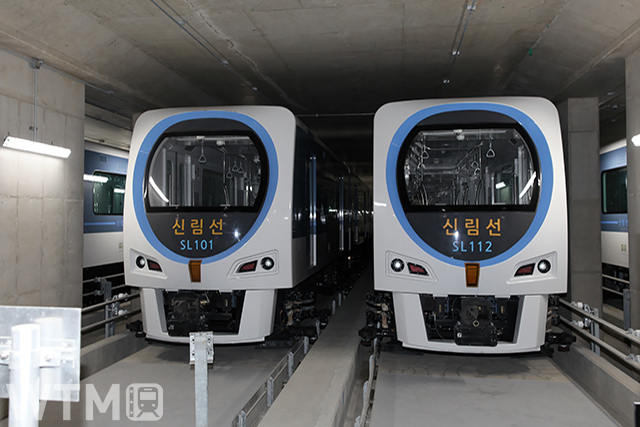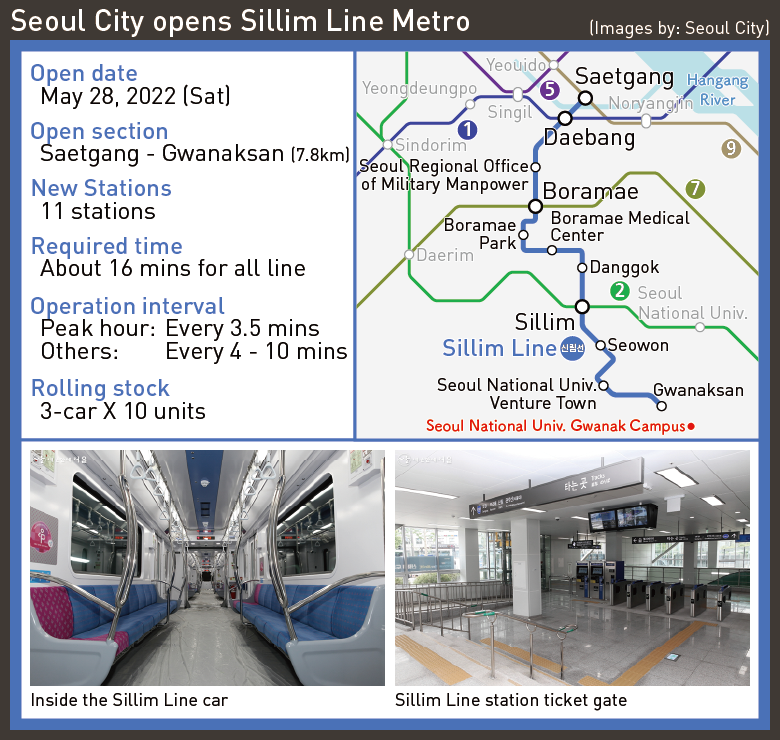Seoul City opened a new railway line “Sillim Line Metro” connecting north and south in the southwestern district of the city on May 28, 2022 (Sat).

Reduced 50 minutes to only 16 minutes
11 stations opened in a 7.8km section from Saetgang Station on the Yeouido along Hangang River, to Gwanaksan Station in front of the main gate of the Seoul National University Campus. 3-car trains run every 3.5 minutes during the morning and evening rush hours and every 4 to 10 minutes during the day. It was built by a private company, South Seoul LRT, and the ownership was transferred to Seoul City upon completion, but the company will continue to operate it.
Until now, the area has been inconvenient for traffic, and it took about 50 minutes by bus between Saetgang and Gwanaksan during the commuting time. With the opening of the Sillim Line, it has been shortened to 16 minutes, andit is also expected reducing traffic congestion. Form a network that runs north-south through four subway lines that run parallel to the east and west, and people can access most of the places in Seoul by changing to Line 9 at Saetgang, Line 1 at Daebang, Line 7 at Boramae, and Line 2 at Sillim (see the figure below for the transit map).
- Reduced 50 minutes to only 16 minutes
- Seoul City opens Sillim Line Metro
- Korea’s first “domestic signal system”

Korea’s first “domestic signal system”
Since the route of the Sillim Line has many sharp curves and the noise caused by friction with the rails is large on iron wheels, the Korean Automated Guideway Transit (K-AGT) was adopted, which is the first rubber tire train in Seoul. In addition, the Korean train signal system (KRTCS) that does not rely on imported technology has been introduced for the first time in South Korea, and the position and speed of trains are controlled by two-way wireless communication, enabling unmanned operation in all sections. To make it easy for everyone to use, barrier-free routes with elevators have been set up inside and outside the ticket gates of each station, as well as wheelchair-accessible restrooms and nursing rooms at all stations.
Lee Jung-hwa, general manager of the Seoul Metropolitan Infrastructure Facility Headquarters, said, “The Sillim Line Metro will be connected to the existing subway lines 1, 2, 7, and 9, and the transportation convenience in the southwestern Seoul will be greatly improved.” He continued “We will do our best to provide comfortable and convenient railway services to the citizens.”
![[WTM] Railway & Travel News](https://en.wtmnews.net/wp-content/uploads/sites/3/2020/11/cropped-wtm_logo.png)